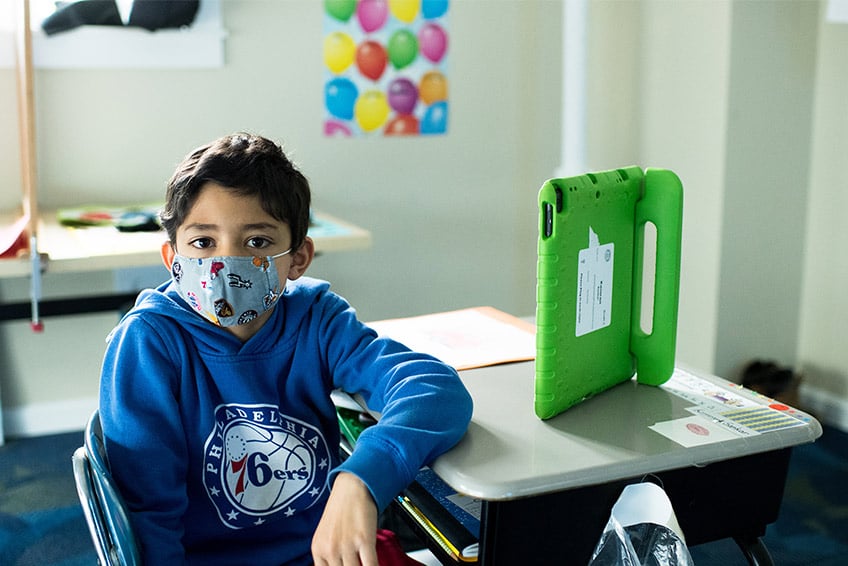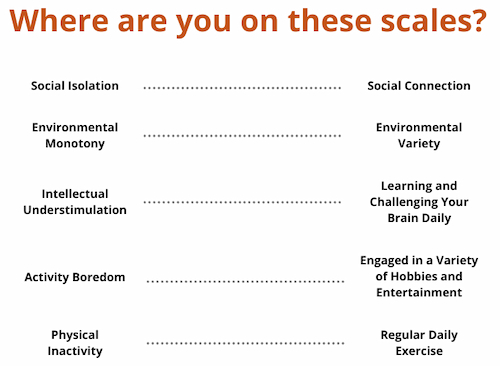 When the COVID-19 pandemic first emerged last spring and the country went into voluntary lockdown, few people fully realized just how long we would be living in this new reality.
When the COVID-19 pandemic first emerged last spring and the country went into voluntary lockdown, few people fully realized just how long we would be living in this new reality.
In Pennsylvania, we had a stay-at-home order from April 1 first through May 7, which would then be extended to June for certain counties. At the time, one month—and then two—seemed to many to be an excruciatingly long period of time. And yet, our communities overwhelmingly came together (in spirit if not in body) and made it happen.
Free Downloadable Guide: Take a Closer Look at Friends' Central School
While we haven’t been living under lockdown for the entire pandemic, we have been living in this new reality for over a year—much, much longer than many of us anticipated. Physical distancing, remote learning, face masks, increased hand washing: This is, for the time being, our new normal.
As we round the corner on COVID-19 and increasingly hope for a time that feels more normal, some children (and adults!) are finding it difficult to stay motivated. This is due to a new form of burnout that some refer to as “hitting the pandemic wall.”
What does it mean to “hit the pandemic wall”?
The pandemic wall can be thought of as a new form of burnout that is specifically tied to dealing with and living through a pandemic.
The term itself comes from an idea that is popular in distance running. In that context, “hitting the wall” refers to a certain point during a run where the action becomes more difficult. For some, it’s a physical response. For others, it’s a mental hurdle. But in either case, it is very real, and it can be challenging to work through.
The same idea applies to hitting the pandemic wall. It is a form of mental, emotional, and, in some cases, spiritual fatigue caused by the stress of COVID-19, which causes people to feel burnt out.
It’s important to note that this is an experience that is so far outside of our normal frame of reference—the last truly global pandemic was more than 100 years ago!—that pandemic fatigue can and does impact all of us. But it can be especially difficult for children who, in many cases, don’t have the same coping skills and strategies that adults have learned over the course of their longer lives.
There is, however, some good news. As many runners will tell you, you can run through the wall—and it is often those miles that come afterward that prove to be the most enjoyable. The same is true for the pandemic wall.
With this in mind, below are a number of strategies that you can use to help your child cope with pandemic fatigue and get through to the other side.
Coping With Pandemic Fatigue
1. Partner with your child’s school.
Your child’s school is an integral part of their support system even during normal times, and this has only become more true during the pandemic. As such, your child’s school can help you not only understand if your child is struggling, but also help them cope with the stress they may be experiencing.
For example, at Friends’ Central, we have structures in place to provide a holistic continuum of care that allows us to maintain high academic expectations while also committing to the high level of support that leads toward success. The framework is dependent on a team of individual advisors, teachers, grade teams, grade deans/lead advisors, administrators, nurses, and licensed mental health counselors who, in partnership with parents and caregivers, create “circles of care” around each of our students.
If you sense that your child is struggling, my first recommendation is to utilize those circles of care. Check in with each layer of support that is offered by your child’s school, and see what options may be available to help your child bounce back.
2. Pinpoint the problem.
There can be many reasons why a child might be hitting the wall, and helping them through it will require you to pinpoint exactly what that problem is. One helpful exercise that I invite families to do is to map their child onto the scale below, and to then come up with strategies for improving the areas where they might be struggling.
 For example, if you find that your child feels socially isolated, you may want to make an extra effort to ensure they’re spending enough time with their friends, whether that is through a socially-distanced outdoor get together, time online, or something else altogether.
For example, if you find that your child feels socially isolated, you may want to make an extra effort to ensure they’re spending enough time with their friends, whether that is through a socially-distanced outdoor get together, time online, or something else altogether.
If you find that your child spends too much time in their room or inside, you might want to think about ways of getting them outside or of otherwise changing up the scenery in as safe a way as possible.
If you find that they are intellectually understimulated, you should connect with their teachers to find ways of keeping them engaged and challenged.
3. Distract them.
If all else fails, you might want to consider a tactic that many runners use to push through the wall during a marathon: Distraction. Instead of focusing on the miles that they have already run or the miles that are left to run, many runners find a way to distract themselves so that they aren’t thinking about running at all. They might listen to music that motivates them, they might start planning a vacation that they want to take, they might even write a poem in their heads. The point is to distract themselves from the discomfort that they are feeling until they’ve worked through the wall.
This same strategy can work wonders with your child, and the easiest way of putting it into action is to ensure that your child is stimulated. Family movie nights, trips to the park, new books, etc. can all be effective ways of shifting their focus onto something other than the pandemic.
The Final Stretch
We are currently in the final stretch of the COVID-19 pandemic, the final miles before the finish line. It has admittedly been a challenging year. But if your child is struggling, you can use the strategies outlined above to guide them through these last few months.




